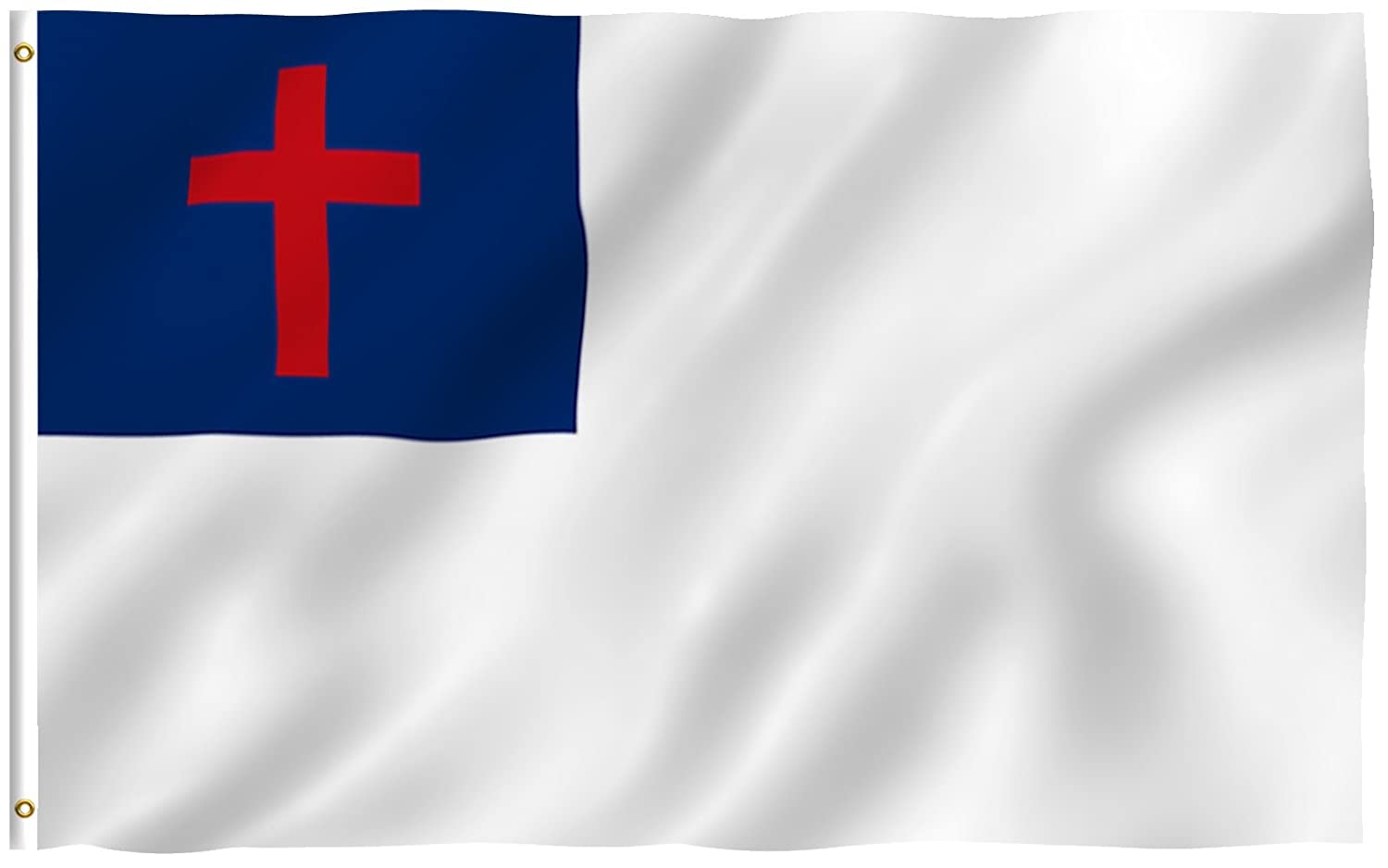
The Christian Flag
from www.prayerfoundation.org
Designed to represent all of Christianity
The "Christian Flag" is a flag designed to represent all of Christianity, but flown mainly by Protestant churches in North America, Africa, and Latin America. The Christian Flag was created in 1897. Today some 244,000 churches display one or more Christian flags in their sanctuaries and classrooms. The flag has a white field, with a red Latin cross inside a blue canton. The shades of red and blue, and the dimensions of the flag and canton, have no official specifications.The Flag's Symbolism
The flag's most conspicuous symbol is the Christian cross, the most universal symbol for Christianity. The red color represents the blood of Christ and brings to mind his crucifixion. Christians believe that Jesus Christ's death and resurrection is the means God uses to save believers from their sins. The cross and blood have been used since earliest Christianity to symbolize salvation through Jesus; in the words of the Apostle Paul, "And having made peace through the blood of his cross, by him to reconcile all things unto himself;" -Colossians 1:20. The white field draws on symbolism throughout the Bible equating white clothes with purity and forgiveness. People who have been "washed white as snow" in the Bible have been cleansed from their sins (Isaiah 1:18; Psalm 51:2). In conventional vexillology (the study of flags, their history and sybolism), a white flag is linked to surrender, a reference to the Biblical description Jesus' non-violence and surrender to God's will. The symbolism behind the blue canton has been interpreted to represent Heaven, truth, or the Christian ritual of Baptism in water....not tied to any specific denomination or church institution...
Since the flag is not tied to any specific denomination or church institution, it represents the unity of all Christians despite historical, cultural, and dogmatic differences. Its simplicity makes it easily copied by any community of Christians. The Christian Flag spread outside North America with Protestant missionaries. It can be seen today in or outside many Protestant churches throughout the world, particularly in Latin America and Africa. It has so far been adopted by very few churches in Europe. Roman Catholic, Eastern Orthodox, and other non-Protestant branches of Christianity do not generally use the flag.How the Christian Flag Came About
The featured speaker failed to arrive for the Sunday School Rally in a Coney Island Chapel in 1897, and - the Christian flag was born: Like so many of the great and memorable things of history, a Christian flag was not contemplated or predesigned. A fortuitous happenstance gave it birth. The Sunday School was holding an old-fashioned Rally Day of the kind which was so much the custom in years past. For this occasion, a favored speaker had been engaged, but for some reason undisclosed did not show up. Superintendent Charles C. Overton, in the emergency, called upon his own gifts of innovation to fill in the time. An American flag lay there across the pulpit. Overton addressed his words to the flag and its symbolism. Then like a flash came the thought, why not also a Christian flag? His impromptu but constructive ad-libbing was to produce a verbal picture of what is today, and for the past one hundred years has been, the Christian flag.Today the Christian flag is one of the oldest unchanged flags in the world. It was conceived at Brighton Chapel, Coney Island, New York, Sunday, September 26, 1897, and was presented in its present form the following Sunday by its originator. Call it chance, or providence, serendipity, or the plan of God. On that day, the Christian flag was born.
The Christian flag is the only free flag in the world.
The Christian flag is the only free flag in the world. It is different from every other flag, religious or secular, ancient or modern. It is uncontrolled, independent, and universal. Unlike all national flags and all denominational flags of various churches, it has no earthly bonds or allegiances. Christ and Christ alone is its Master. Without limitation, it exists for all the world's people regardless of sex, race, national boundary, economic condition, affluence, or poverty, politics, slavery or freedom. It cannot be restricted by any nation or denomination. This unique, universal quality makes it like the air we breathe, belonging to all and yet owned by none. For those who want it, wherever and whenever, it is freely theirs. All church flags are organizational symbols of specific corporate, legal, religious entities. The Roman Catholics, Episcopalians, United Methodists, Baptists, United Church of Christ, and others have flags, official or otherwise, but limited to their use and ruled by them. Not so with the Christian flag. This flag stands in its own right, shines by its own spiritual light, true, free, untrammeled, uncompromised. It belongs only to Christ and the Cross which symbol it bears.